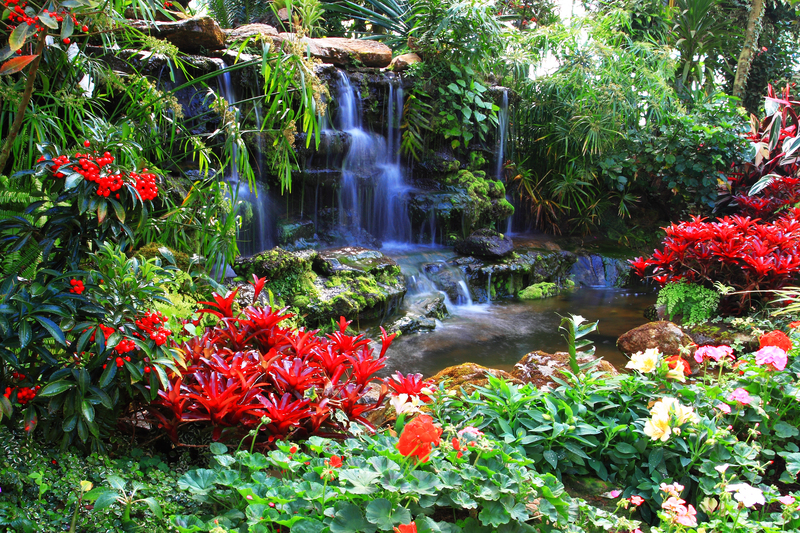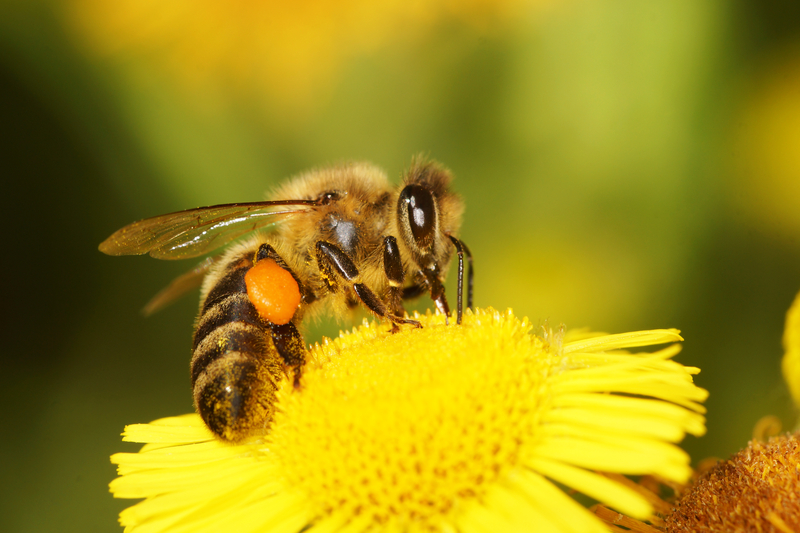Creating a Green Retreat: Herb Garden Basics
Posted on 27/05/2025
Transform your living spaces into lush sanctuaries with an herb garden! Creating a green retreat at home not only provides fresh flavors for your kitchen but also nurtures your well-being and enhances your decor. In this comprehensive guide, discover everything you need to know about starting an herb garden -- from planning and planting to maintenance and harvesting.
Why Choose an Herb Garden for Your Green Retreat?
An herb garden isn't just about growing plants -- it's about cultivating a sustainable lifestyle, enhancing your health, and delighting your senses. Introducing a green retreat into your home or outdoor space offers these valuable benefits:
- Fresh and Organic Herbs: Pick what you need, when you need it, for healthier meals.
- Cost Savings: Reduce grocery bills by growing your own herbs year-round.
- Aromatic Atmosphere: Enjoy the soothing scents of fresh basil, lavender, or rosemary.
- Therapeutic Effects: Gardening relieves stress and fosters mindfulness.
- Eco-Friendliness: Reduce your carbon footprint and boost biodiversity in your surroundings.

Planning Your Herb Garden: The Foundation of a Thriving Green Retreat
Before diving into planting, a well-thought-out plan ensures your herb garden flourishes and truly becomes a relaxing green retreat. Follow these steps:
1. Assess Your Space
- Indoor Spaces: Use windowsills, balconies, vertical planters, or kitchen countertops.
- Outdoor Spaces: Utilize raised beds, garden borders, or patio planters.
Tip: Most herbs need at least six hours of sunlight daily. Observe your space at different times to find the sunniest spot.
2. Choose Your Herb Varieties
Select herbs based on your culinary preferences, climate, and available space. Some popular and beginner-friendly choices include:
- Basil: Perfect for Italian dishes, salads, and pestos.
- Mint: Refreshing in teas and desserts, but can spread rapidly.
- Rosemary: Hardy evergreen, delicious with roasted meats and vegetables.
- Thyme: Versatile, low-growing herb suitable for small pots.
- Parsley: Rich in vitamins, ideal for garnishes.
- Cilantro (Coriander): Adds zest to salsas and curries.
- Chives: Mild onion flavor, thrives in containers.
- Dill: Great with fish, pickles, and potatoes.
*If you're striving to create a comprehensive green retreat with an herb garden, consider adding medicinal or aromatic herbs like lavender, chamomile, or lemon balm for teas and self-care products.
3. Decide on Seeds or Seedlings
- Seeds: Economical and offers greater variety. Good for patient gardeners.
- Seedlings/Transplants: Faster results, recommended for beginners or those starting gardens later in the season.
Setting Up Your Herb Garden Sanctuary
1. Preparing Containers and Soil
Herbs thrive in well-draining soil. Container gardening offers flexibility and is ideal for small spaces or urban living.
- Choose pots with drainage holes to prevent soggy roots.
- Fill containers with high-quality, organic potting mix. For outdoor beds, enrich soil with compost or aged manure.
- Consider vertical herb gardens or hanging baskets for a space-saving, visually appealing green retreat.
2. Planting the Herbs
- Sow seeds as directed on the packet, usually in early spring. Many herbs prefer a light covering of soil.
- Transplant seedlings at the same soil depth as in their pots, spacing them to allow for growth.
- Water thoroughly after planting, ensuring excess moisture drains away.
_For more lush growth in your herb garden, group herbs with similar water and light needs together._
Essential Herb Garden Care: Keeping Your Green Retreat Flourishing
Putting effort into daily and weekly herb garden maintenance ensures both health and visual harmony in your green retreat. Here's how:
1. Watering Best Practices
- Check soil moisture: Insert your finger into the soil. Water when the top inch feels dry.
- Water early: Morning is best to avoid fungal illnesses.
- Avoid overwatering: Most herbs prefer to dry out slightly between waterings.
2. Harvesting for Healthier Plants
- Harvest regularly: Picking leaves stimulates new growth and prevents flowering (which can make herbs bitter).
- Use clean scissors: Cut just above a leaf pair, and avoid stripping any single plant bare.
3. Fertilizing and Feeding
- Feed lightly: Too much fertilizer can make herbs lose flavor.
- Use organic options: Such as compost tea or diluted fish emulsion, once every 4-6 weeks.
4. Pest and Disease Control
- Inspect plants often for aphids, mites, or mildew.
- Encourage beneficial insects like ladybugs and lacewings for natural pest control.
- Remove affected leaves and use organic remedies like neem oil if needed.
Creative Design Ideas for a Personal Green Retreat
Your herb garden can be as unique as you are. Try these creative approaches to elevate the aesthetics and function of your green haven:
- Herb Spiral: Build a spiral-shaped mound with rocks or bricks, allowing different herbs to thrive at various levels and drainage zones.
- Themed Herb Gardens: Design a Mediterranean, tea, or medicinal herb section.
- Edible Borders: Plant low-growing herbs along walkways or garden edges for scent and beauty.
- Kitchen Window Sill Garden: Keep fresh flavors within easy reach, while adding greenery to your kitchen space.
- Vertical Herb Garden: Attach planters or wall pockets on a garden fence to make the most of limited space and create a living wall effect.
Troubleshooting Common Herb Garden Problems
Even the best-planned green retreat can face challenges. Here's how to address typical herb garden issues:
- Leggy Growth: Usually due to insufficient light. Move pots to a sunnier spot or supplement with grow lights indoors.
- Yellow Leaves: Indicates overwatering, poor drainage, or nutrient deficiencies.
- Pest Infestations: Spot-treat with insecticidal soap, and space plants out for good air circulation.
- Bolting (Early Flowering): Harvest more frequently, or pinch off flower buds as soon as they appear.
Extending Your Green Retreat: Preserving and Using Homegrown Herbs
A bountiful herb garden offers more than just fresh sprigs. Make the most of your harvest by preserving and enjoying herbs throughout the year!
1. Drying and Storing Herbs
- Air-drying: Gather small bunches, tie with twine, and hang upside-down in a dry, shaded area.
- Oven or Dehydrator: Spread leaves on a tray and dry at low temperatures.
- Storage: Store dried herbs in airtight glass jars away from direct sunlight.
2. Freezing for Freshness
- Chop herbs and freeze in ice cube trays with water or olive oil.
- Label cubes for easy use in soups, stews, and sauces.
3. Culinary and Wellness Uses
- Culinary creations: Add herbs to salads, marinades, baked goods, and cocktails for vibrant flavors.
- Herbal teas: Infuse mint, lemon balm, or chamomile for soothing, caffeine-free drinks.
- Natural self-care: Use lavender and rosemary in bath salts, beauty products, or homemade sachets.
Seasonal Considerations for Your Herb Garden Oasis
To keep your herb garden retreat thriving all year:
- Spring: Sow seeds, transplant starters, and feed soil with compost.
- Summer: Mulch beds, water consistently, and harvest frequently.
- Autumn: Dry surplus herbs, bring sensitive plants indoors, and tidy up containers.
- Winter: Provide grow lights for indoor gardens and protect outdoor perennials with mulch.

FAQs: Your Guide to Creating a Green Retreat with an Herb Garden
1. Which herbs are easiest for beginners?
Basil, mint, parsley, chives, and thyme are some of the easiest and most forgiving herbs for those just starting their herb gardening journey.
2. Can I grow an herb garden indoors?
Absolutely! Most culinary herbs thrive on a sunny windowsill, under grow lights, or in vertical wall planters. Indoor herb gardens offer year-round harvests and easy access for cooking.
3. How do I prevent my herbs from dying?
Ensure your herbs have well-draining soil, sufficient sunlight, and don't overwater. Prune and harvest regularly to encourage healthy new growth.
4. What is the best way to start an herb garden for a small space?
Opt for containers, hanging baskets, or a tiered vertical garden. Focus on a few multi-use herbs, and use creative spaces like balcony railings or kitchen counters.
Conclusion: Cultivate Your Green Retreat Today
Creating a green retreat with an herb garden is one of the most rewarding projects for any home. It brings you freshness, beauty, and a touch of nature's tranquility right to your doorstep. Whether you're planting in a sunny backyard, on a balcony, or by your kitchen window, the basics of herb gardening remain the same: select the right herbs, provide good care, and enjoy the process. With a little planning and patience, your home can become a lush haven of taste, scent, and relaxation.
Take the first step today -- gather your favorite herbs, embrace the basics, and start your journey to a vibrant, sustainable, and delightful green retreat!

